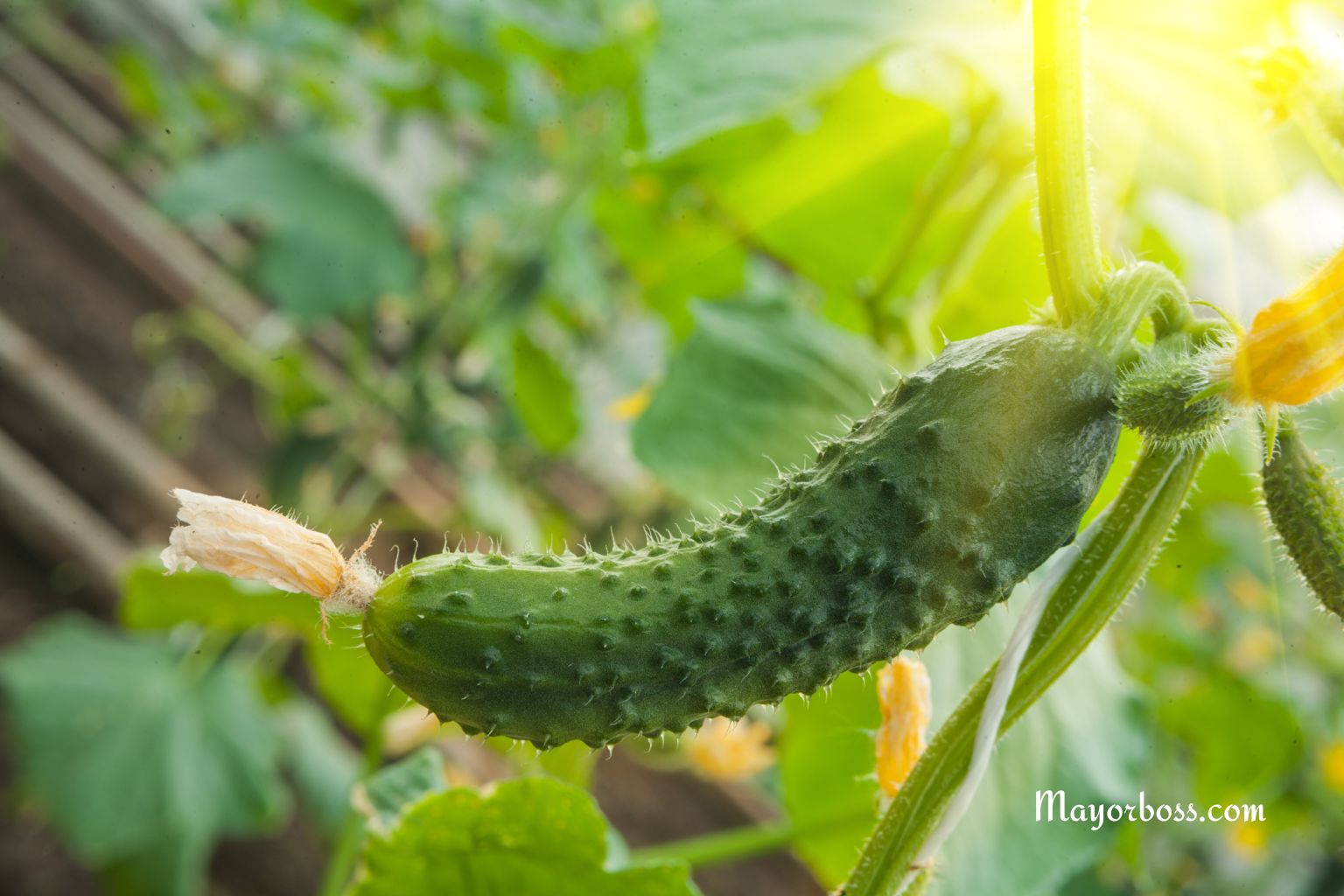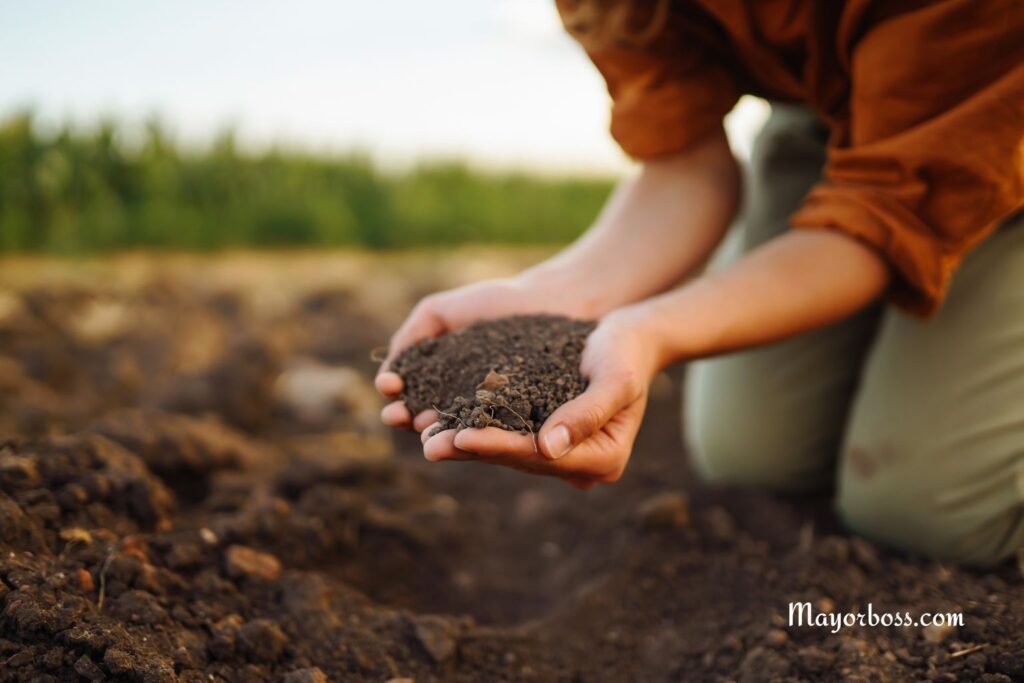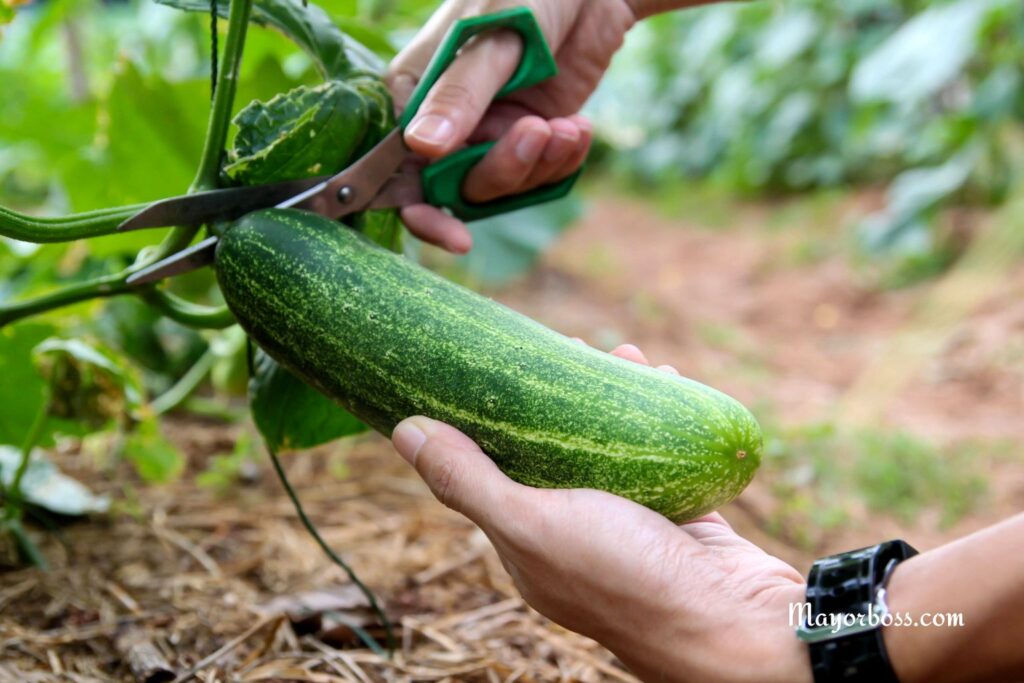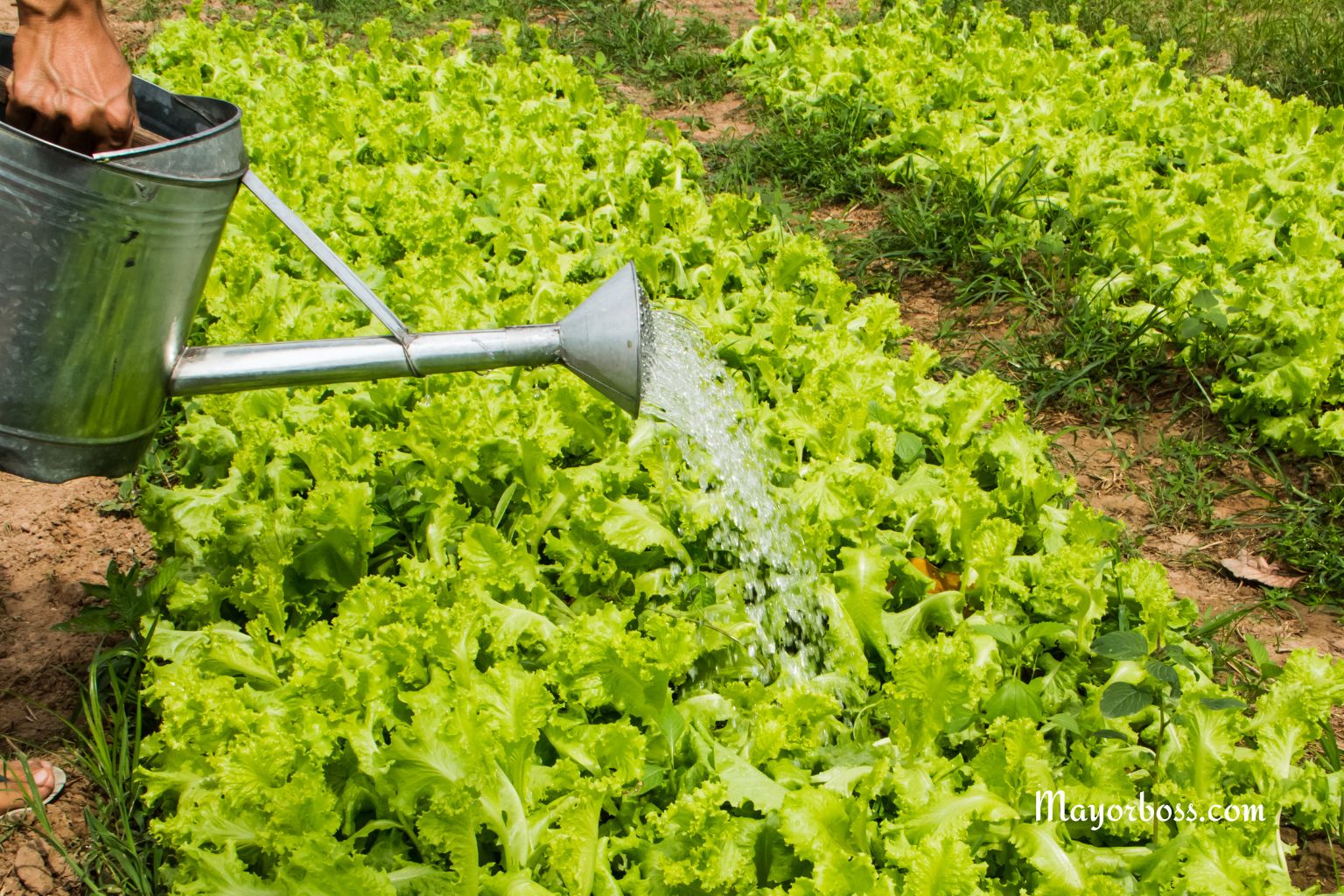These Cucumber Growing Tips Can Boost Your Harvest
Learn the best ways to successfully grow crisp, healthy cucumbers and get a bigger, tastier crop.

Choose the Right Variety
Begin by selecting a cucumber variety that matches your local climate, garden space, and how you plan to use the harvest. For example, if you’re growing cucumbers for fresh eating in salads or sandwiches, choose slicing varieties like ‘Marketmore’ or ‘Straight Eight.’ These types produce long, smooth-skinned fruits with mild flavor. If your goal is to make pickles, go for compact, firm varieties such as ‘Boston Pickling’ or ‘National Pickling,’ which are ideal for preserving due to their smaller size and crisp texture.
Also, consider your growing environment. If you live in a cooler region, look for fast-maturing or cold-tolerant varieties that can handle a shorter season. In hot, humid areas, select heat-resistant types that can thrive in high temperatures.
Importantly, choose disease-resistant varieties when possible. Some cucumber types are bred to resist common issues like powdery mildew, downy mildew, mosaic virus, and bacterial wilt. These varieties are easier to care for and more likely to produce a reliable crop, especially in gardens where disease has been a problem in past seasons.
Plant in Full Sun
Want to boost your cucumber yield? For optimal growth and fruit harvest, cucumbers need at least 6–8 hours of direct sunlight every day. Sunlight supports healthy leaf growth and helps produce more fruit. Without enough light, plants become weak and produce fewer cucumbers.
Prepare the Soil Well
Cucumbers prefer loose, well-drained soil that’s rich in organic matter. Before planting, mix at least 2 to 3 inches of compost or aged manure into the soil. A slightly acidic to neutral pH (between 6.0 and 7.0) works best.

Use Trellises or Supports
Trellising keeps vines off the ground, allowing better airflow and reducing the risk of disease. It also makes harvesting easier and helps the fruit grow straighter. For bush varieties, spacing is more important than support.
Water Consistently
Cucumbers need regular watering—about 1 inch per week. Keep the soil moist but not soggy. Uneven watering can lead to bitter-tasting fruit or fruit that curls. Try watering at the base of the plant in the morning to keep leaves dry and prevent disease.
Feed Your Plants
Cucumbers are heavy feeders. After the plants start growing, apply a balanced fertilizer every few weeks. Once flowering begins, switch to a fertilizer higher in potassium and phosphorus to boost fruit production.
Mulch to Keep Soil Moist
Spread mulch around the base of your cucumber plants. It particularly helps retain soil moisture, hides weed growth, and shields shallow roots from temperature changes. Good mulch options include straw, shredded leaves, or grass clippings.
Watch for Pests
Common cucumber pests include cucumber beetles, aphids, and spider mites. Check leaves often and use insecticidal soap or neem oil if needed. Crop rotation and row covers can help prevent infestations.
Avoid Powdery Mildew
Powdery mildew is a common fungal disease in cucumbers. Good airflow, proper spacing, and watering at the base can help prevent it. If mildew shows up, remove affected leaves and use a safe fungicide if necessary.
Harvest at the Right Time
Pick cucumbers when they’re firm, green, and the right size for their type. Don’t wait too long—overripe cucumbers turn yellow, become seedy, and stop the plant from producing new fruit. Regular harvesting encourages more growth. In fact, the more often you pick ripe cucumbers, the longer the plant will keep blooming and producing new fruit.

Rotate Your Crops
Don’t grow cucumbers in the same location each year. Repeating crops in the same soil encourages the buildup of pests, fungi, and diseases, such as bacterial wilt, downy mildew, and cucumber beetles, that can linger in the soil from one season to the next.
Practicing crop rotation helps break this cycle. Ideally, wait at least two to three years before planting cucumbers—or any other member of the squash family like pumpkins or melons—in the same garden bed. Rotate with unrelated crops, such as beans, corn, or lettuce, to keep the soil healthier and reduce the likelihood of recurring problems.
Start Indoors if You Have a Short Season
In cooler climates, start seeds indoors 3–4 weeks before your last frost date. Transplant seedlings outside once the soil is warm. This gives your plants a head start and helps ensure a longer harvest window.
Prune When Needed
For vining cucumbers, light pruning can help the plant focus energy on producing quality fruit. Remove old or damaged leaves and pinch off side shoots if the plant becomes too crowded.
Pollination Support
Cucumbers need pollination to produce fruit. If bees are scarce, hand-pollinate flowers using a small brush. Gently transfer pollen from male flowers to female ones (which have a small swelling below the petals).
FAQs
1. How many cucumbers will one plant produce?
A healthy cucumber plant can yield about 10 to 20 cucumbers during its growing season, depending on the variety and conditions.
2. Can cucumbers grow in containers?
Yes. Choose a large container (at least 5 gallons), add rich soil, and provide a trellis. Bush varieties are best for small spaces.
3. What causes cucumbers to turn yellow?
Overripe cucumbers often turn yellow. It may also signal too much water, poor soil nutrition, or disease.
4. Why are my cucumbers bitter?
Bitterness comes from uneven watering, stress, or certain varieties. Consistent care usually prevents this issue.
5. How long does it take to grow cucumbers?
Cucumbers usually take 50 to 70 days from planting to harvest, generally depending on the variety and growing conditions.






